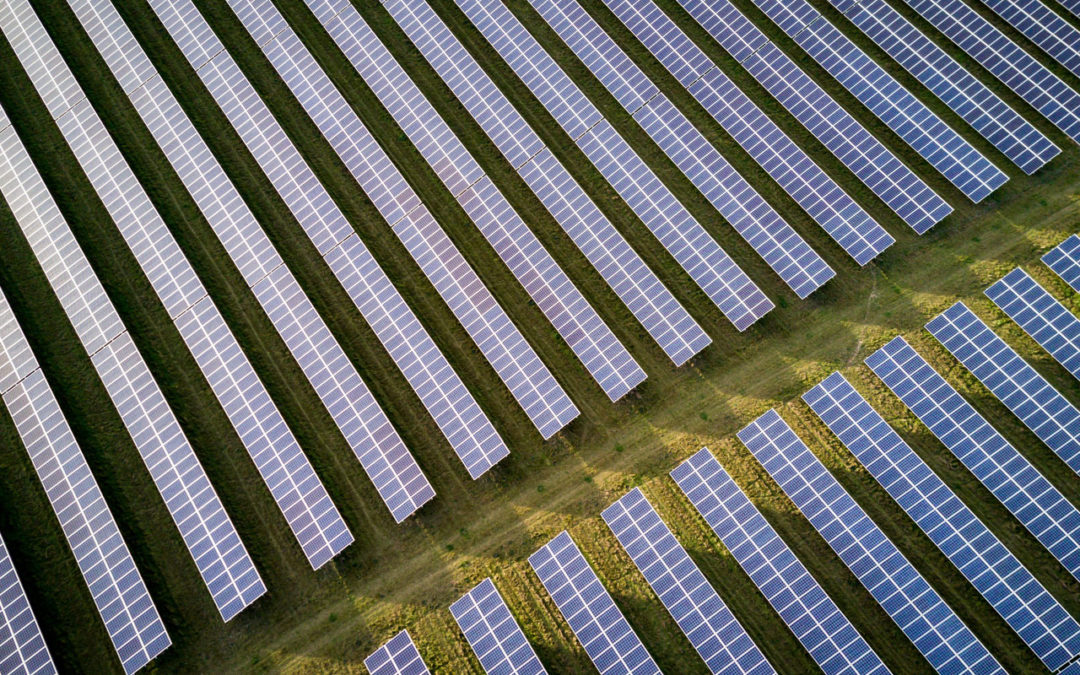
by Tyler Huebner | Apr 11, 2019 | Public Service Commission, Renewables, Solar, Utilities, Utility Scale
Today at its Open Meeting, the Wisconsin Public Service Commission approved five interrelated cases that will lead to a five-fold expansion of solar energy in Wisconsin.
The PSC approved:
- The Badger Hollow Solar Farm project in Iowa County, totaling 300 megawatts. Badger Hollow could become the largest solar electric plant in the Midwest when completed. In addition, the PSC approved a “tie line” that will deliver Badger Hollow’s output to a nearby substation, where it will be injected into the existing southwest Wisconsin grid.
- The Two Creeks Solar Project in Manitowoc County, totaling 150 megawatts. As with Badger Hollow, the PSC also approved a “tie line” that will deliver Two Creeks’ output to a nearby substation.
- Finally, the PSC approved an application from two Wisconsin utilities, Wisconsin Public Service based in Green Bay and Madison Gas & Electric, to acquire a total of 300 megawatts of this new solar capacity. The utilities will acquire the entire Two Creeks Solar Farm and a 150 MW share of the Badger Hollow Solar Farm. Wisconsin Public Service will acquire a total of 200 MW and Madison Gas & Electric will acquire 100 MW.
By RENEW Wisconsin’s estimates, the state of Wisconsin closed 2018 with about 103 megawatts of solar power, about 80% of that residing on homes and buildings, directly serving the customers who bought the solar arrays.
When completed, the 450 megawatts of solar would produce about 1.3% of Wisconsin’s annual electricity consumption, and supply electricity equivalent to the usage of about 116,500 Wisconsin homes. Both projects should be operational by mid-2021.
RENEW Wisconsin’s Executive Director, Tyler Huebner, said, “We are very happy to see the Public Service Commission approve these solar projects and find that it is cost-effective for two of our major utilities to own and operate these plants. It is a landmark day for solar energy in Wisconsin. Solar energy is a smart choice to meet the electricity needs of our citizens, businesses, and organizations, and without a state mandate to do so. With solar energy, we will produce homegrown, healthy energy right here in Wisconsin for years to come, and provide substantial economic benefits to the landowners and local governments who will host these projects.”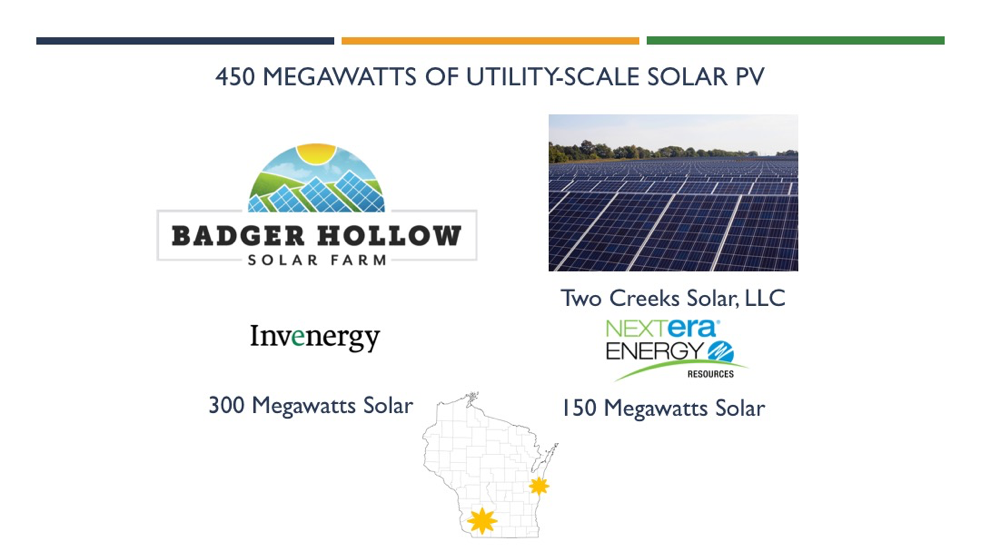
Today’s approvals build momentum for large-scale solar as a resource for power suppliers and utilities in Wisconsin.
- Three weeks ago, Dairyland Power Cooperative announced a commitment to purchase electricity from a 149 megawatt solar facility called Badger State Solar that would be located in Jefferson County. That project is subject to PSC approval as well.
- Just yesterday, April 10, the Richland County Board of Zoning gave final, and unanimous, approval to the 49.9 megawatt Richland County Solar Project developed by Savion Energy to be located in the Town of Buena Vista.
- In 2017, WPPI Energy announced it would purchase power from a 100 megawatt solar project near the Point Beach Nuclear Station. That project also will seek PSC approval in 2019.
Taken together, these five new solar projects account for approximately 749 megawatts of new solar power. If all are approved and built, they would supply 2.1% of Wisconsin’s annual electricity needs, and produce enough power to equal the annual usage of about 185,000 homes in Wisconsin. Beyond these projects, at least 4,000 megawatts of additional large-scale solar projects are being explored and developed in Wisconsin. We encourage you to learn more about large-scale solar energy, including our long list of questions and answers, at www.renewwisconsin.org/solarfarms.
About RENEW Wisconsin
RENEW Wisconsin is a nonprofit organization which promotes renewable energy in Wisconsin. We work on policies and programs that support solar power, wind power, biogas, local hydropower, geothermal energy, and electric vehicles in Wisconsin. More information is available on RENEW’s website: www.renewwisconsin.org.
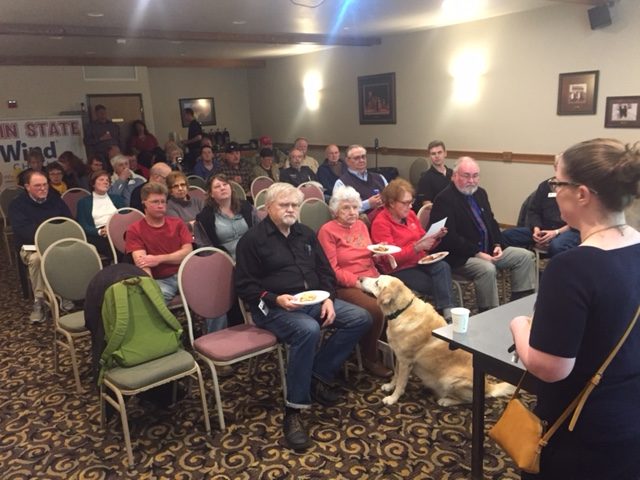
by Heather Allen | Apr 5, 2019 | Local Initiatives, RENEW Wisconsin, Renewables, Wind
On Monday March 25th RENEW Wisconsin facilitated a Wind Energy Education Event in Monroe, Wisconsin to answer questions from local residents about wind energy and new wind projects being proposed in Lafayette and Green Counties.
The Wind Education Event was hosted by Art Bartsch, local entrepreneur, green businesses innovator, and proprietor of the Monroe Super 8 Motel. Tyler Huebner, Executive Director of RENEW Wisconsin, kicked off the event with an overview of wind energy in Wisconsin. Then a panel of local experts including Mayor Dave Breunig (City of Darlington), Alder Steve Pickett (Darlington), and Tim McComish (Chair of Seymour Township Board), discussed their experiences with the Quilt Block Wind Farm located in neighboring Lafayette County. The event concluded with a demonstration of the power of wind energy from Dick Anderson and the student scientists of Kid Wind. Brodie Dockendorf (EDP Renewables) was also in attendance and addressed many technical questions about how wind turbines work. You can watch the video of the entire event on our Facebook page at this link.
Energized in 2017 and located wholly within Seymour Township in Lafayette County, Quilt Block serves as an excellent case study for future wind farms in the area. Quilt Block is a wind farm comprised of 49 modern turbines able to generate up to 2 MW each. Forthcoming wind farm projects planned in Wisconsin are likely to use similar scale or slightly larger turbines. The Sugar River Wind Farm proposed for southern Green County would host turbines with capacities of 2.625 MW and 2.75 MW.
The Quilt Block Wind Farm offers many economic benefits to Lafayette County. According to Mayor Dave Bruenig and Alderman Steve Pickett, the project construction supported local businesses through a variety of activities including the construction of a $700,000 warehouse and office space, the presence of the construction crews, and the full-time employees who purchased homes in the community. Mayor Dave Bruenig said that hotels, restaurants, automotive dealers in Darlington, and the neighboring communities saw benefits and that Green County could expect to see a “big economic boom” with the planned Sugar River wind farm.
The speakers emphasized the value of Wisconsin producing its own energy. Wisconsin imports $14 billion dollars worth of oil, coal, and gas, money that could be reinvested locally if we produced our own energy. Alder Steve Pickett said, “I think the energy that they’re going to be providing will help us be self-sustaining. And in the future that’s going to be very, very important, because if there’s any growth you’re going to need to have to have electricity to do it. And the only way you can do it is to start to generate your own.” When speaking about his grown kids returning home he noted that, “we have a great life here and I’d like to keep it that way and part of that is being able to develop power within our own communities.”
The presenters also addressed questions about what it’s like living near the turbines. Tim McComish who runs a family farm with 250 Holsteins said “I live in the center of Seymour Township, they’re [the turbines] are all around me.” He added that they have started to become part of the landscape. “As crazy as it sounds, the 49 around me, I have to look once in a while to see where they’re at, because they blend in. It’s amazing.” He added that the sound of the turbines, even the one on his property doesn’t cause any concern. “I myself, don’t even hear them at night. It’s part of the farm,” he added.
Below are some highlights of the event’s discussion. Questions are paraphrased for clarity.
Question: Does the electricity that’s made by your wind turbines stay in the county?
Brodie Dockendorf (EDP Renewables): We sell to Dairyland Power Cooperative out of La Crosse, Wisconsin. They actually sell electricity to Scenic Rivers, which is local, it’s sold locally to Seymour township. The dollar flow might go to La Crosse, Wisconsin, to Dairyland Power Cooperative, but the electricity, the electrons that are being generated, are actually used locally.
Question: Are people selling their houses because of the wind farm in your community? Have those homes sat on the market without buyers?
Mayor Breunig: No not at all. There’s a shortage of workers, there’s also a big shortage of housing. One of the things we got going up on one end of town is 24-unit housing. It didn’t affect us at all.
Tim McComish: There’s not a house available in our township for rent because there are workers looking for homes all the time.
Question: What about productivity of cows that live near wind turbines?
Tim McComish: I’m a dairy farmer, we’re still milking as good or better than before. It’s not affecting us.
Question: What about health issues and soil quality around wind turbines?
Tyler Huebner: Growing up in a town almost the exact same size as Monroe, eight thousand people, right now there are two hundred and sixty turbines recently built in my county, Poweshiek County. Twenty-four are being explored here in Green County versus two hundred and sixty. Everybody who’s going to lease those turbines to those developers or those utilities, they’re all corn farmers too. There’s at least ten times as many wind turbines in Iowa, and I have not heard anything come out of Iowa that would equate a loss in production or a change in the soil quality or anything like that related to wind.
In Iowa I have not heard any health complaints anywhere near where I grew up. I know that there is a lot on the internet that can be found, on this point there are some pretty reputable studies that have been done by Massachusetts Department of Environmental Health. I know that the Australian National Health Association have looked at these claims and basically found that, if you look at the scientific and the medical peer reviewed studies that there has not been found a link between human health impacts and living near wind turbines.
We also have references to a number of reputable studies on our website with more information about health and wind.
Question: Could someone explain to me how you take DC current and convert it to AC current? Who monitors the IEEE standards?
Brodie Dockendorf: The wind turbines actually generate electricity on alternating current. They do not generate on DC. Up in the very top the generator is a squirrel cage motor, we turn that squirrel cage motor faster than what it’s supposed to. 1600 RPM squirrel cage motor is consuming electricity at 1580 RPMS. What we do is we spin it up faster. So at 1600 RPMs it meets an equilibrium where it doesn’t generate or consume electricity. When we spin it faster than 1600 RPMs at 1620 we actually start pushing alternating current.
It is a perfect sine wave, the same way a coal-fired power plant, a nuclear power plant, or a natural gas plant’s combined cycle natural gas plant, it’s the same way they are generating electricity. We don’t reinvent the wheel for this.
The same methods are used throughout the United States. There are turbines that will take a variable frequency. They take an inverter, like you would have a DC inverter for solar batteries, your car, and what they do is they actually convert it to DC and then they convert it right back to AC using an inverter.
As far as the standards of electricity go, if we put dirty electricity on the grid, MISO, is always monitoring. The transmission companies (ATC and ITC) are monitoring our output. If we are even out of spec of the 60Hz cycle, they will open our breakers and shut us off.”
Question: What about harmonic distortion?
Brodie Dockendorf: There are harmonic filters on everything. We have harmonic filters in our substations. We also have phase compensation, big capacitor banks, any other electrical generator. We are scrutinized. We are a federally regulated power generation company, just like any other generator. There are some manufacturers [of wind turbines] that do [DC generation]. We’re scrutinized just like everybody else. We have to maintain no disturbance on the grid. If you cause disturbance on the grid, that kicks in fines. NERC and FERC regulations keep us in line. We can’t just go and do whatever we want on the grid and cause problems. If we do, [there are] big fines. Even if I miss a substation inspection – they can fine us up to $1,000,000 a day. We are regulated beyond what we can even imagine. So we are on top of our game.
Thank you to everyone who participated in this informative event! And if you would like to learn more about wind farms in Wisconsin please visit our Frequently Asked Questions page.
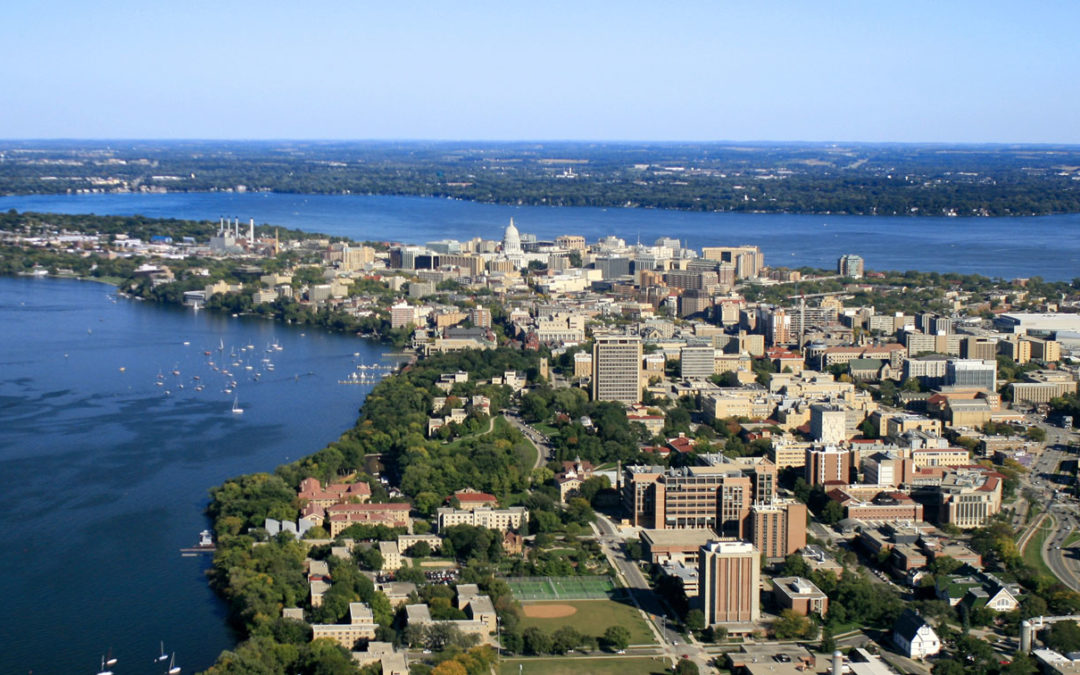
by Michael Vickerman | Mar 28, 2019 | Local Government, Local Initiatives, Renewables, Sustainability
The Madison Common Council adopted in late March a resolution setting 2030 as the deadline to achieve a 100% renewable energy and net-zero carbon goal for city operations. Spearheaded by the Sustainable Madison Committee (SMC), the resolution empowers city staff to lead by example and initiate aggressive policies and practices designed to reduce carbon emissions across the community.
Madison’s action comes on the heels of similar resolutions adopted by its neighbors, specifically the cities of Fitchburg and Monona, committing themselves to procure renewable energy sources to power their operations.
In late February Fitchburg’s Common Council resolved to offset 100% of the city’s electricity demands from renewable energy resources by 2030. A week later, Monona adopted a resolution establishing an identical goal and deadline for its own electricity use, and coupled it with a renewable energy commitment by 2040 applicable to other energy uses, such as heating buildings and fueling vehicles.
With these resolutions on the books, there are now five Wisconsin cities that have embraced a 100% renewable energy (or electricity) future for its operations, and have set deadlines for achieving it. The other two cities on that list are Eau Claire and Middleton (see comparison here).
Adopted on March 19, 2019, Madison’s resolution emerged from a report commissioned by the city in March 2017 to analyze three different scenarios for achieving 100% renewable energy use and net zero carbon emissions. Of the three scenarios examined in the HGA/Navigant report, the SMC selected the 2030 pathway (Scenario 3), after a spirited discussion to identify certain implementation steps necessary to ensure that all City residents benefit from this transition.
The resolution commits city staff to engage “committees and commissions to review and develop plans for policies, programs, and procedures to achieve the goals and targets in Scenario 3.” Between now and the end of the summer, SMC members will work with the relevant committees and commissions to shape and guide these implementation plans. These plans will be submitted in September.
The HGA/Navigant report estimated $95 million in up-front investments over 12 years to achieve the City’s 2030 carbon reduction goals. Under Scenario 3, a combination of heightened building energy efficiency, additional supplies of renewable energy, and an increasingly electrified vehicle fleet produced the broadest array of benefits for city residents, including lower operating budgets and reductions in health-related expenses. According to HGA/Navigant, the social and economic benefits from this transition, coupled with the energy savings, would far surpass the original investment.
At $60 million, the investment in electric buses shapes up to be the costliest element among the strategies analyzed, but one likeliest to yield substantial health benefits to the entire community.
Already, the City of Madison has committed to provide nearly $1.4 million in project financing to leverage the construction of five solar arrays in western Wisconsin totaling 10 MWac. Construction has already begun on these arrays, and all will begin generating power this summer, enough to offset 37% of the City’s electric load on an annual basis. The arrays, owned by BluEarth and developed by OneEnergy Renewables, will serve the municipal utilities of Argyle, Cumberland, Elroy, Fennimore, and New Lisbon.
(Note: See images of BluEarth projects under construction.)
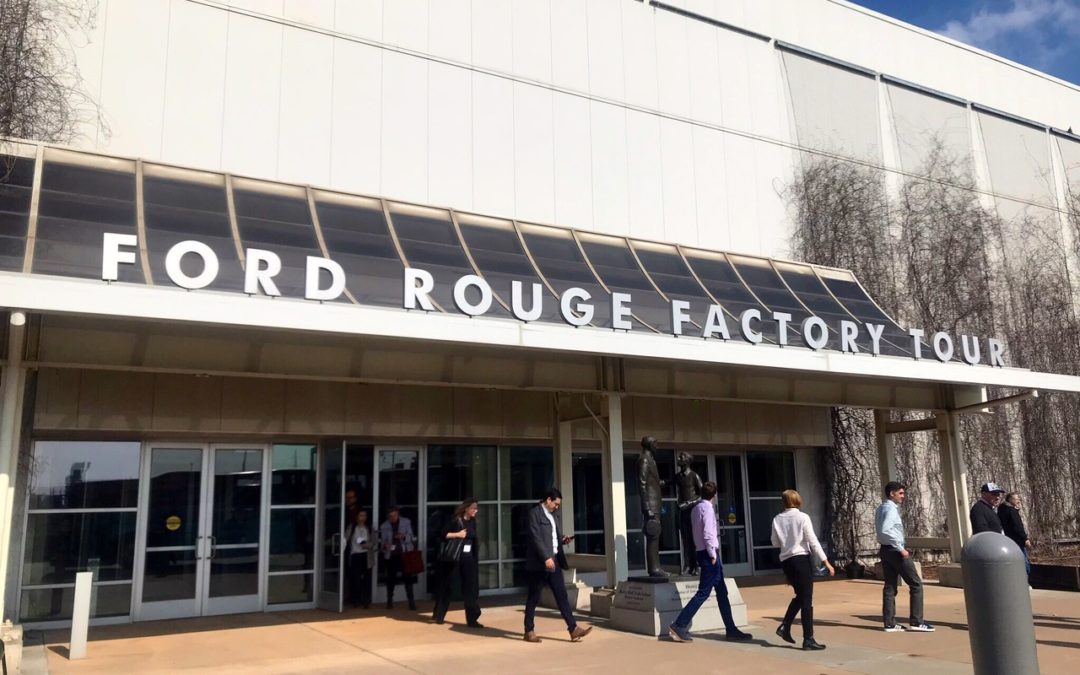
by Jane McCurry | Mar 22, 2019 | Electric Vehicles
When I left for Michigan last Friday, I was not expecting my electric vehicle advocates meeting to remind me how important trucks are to American culture. The conference provided the opportunity to tour the Ford Rouge Factory and Rivian, the new “electric adventure vehicle” maker. Funnily enough, both experiences centered around pickup trucks. On the surface, trucks don’t exactly seem like the electric vehicle advocate’s dream, but perhaps we needed this conversation to help us think about really reaching the masses with electric vehicles.
Ford Rouge Factory Tour
The Ford Rouge Factory produces the iconic F-150. No photos during the tour were allowed, so I can’t share too much, other than that it was a fascinating experience to see the manufacturing facility in full swing. Workers literally put trucks together while we watched. Someone on the tour with me described it as “a ballet” of workers and machinery, each going at the exact correct pace to keep up with the production schedule and snap vehicles together seamlessly.
What struck me was the size of the vehicles. On the day we went, the factory produced extended cab trucks. They were giant! It was amazing to watch these cars roll off the line (every 53 seconds!). I highly recommend visiting Rouge Factory if you find yourself in Southeast Michigan.
In January, Ford announced plans to make an electric version of the F-150. I don’t know when or where yet, but I hope I’ll have the opportunity to tour the factory where electric F-150s are produced, too.
Rivian
Rivian is a start-up company that is developing “the world’s first electric adventure vehicles.” In February, Rivian announced a $700 million investment round, led by Amazon. They are working on a pickup truck and an SUV that are capable of taking you from the coast to the mountains and back on a single charge. Rivian’s cars look cool and have practical additions like the “gear tunnel” to give you even more space to store your adventure gear.
The first Rivian vehicle will be the R1T, an electric pickup truck. It’s expected to hit production in late 2020. Coincidentally, Rivian is testing its truck’s performance with a car that’s disguised as an F-150. There aren’t any ties between the two automakers*, Rivian just wants to test their technology without gaining attention, and the F-150 cab allows them to do just that.
Rivian’s Headquarters is in Plymouth, Michigan. You may remember from a previous blog that I grew up in Metro-Detroit – I actually went to Plymouth High School. It’s so fun to go home and see new companies combing transportation and technology in my old stomping grounds.
UPDATE: Ford Invests $500M in Rivian
Today (April 24, 2019), Ford announced a $500 million investment in Rivian. So much for my “no ties” statement above! Rivian and Ford will work together to create an all-new electric car, which will be sold under the Ford brand. Ford is developing more electric vehicles for the market and hopes to use the Rivian “skateboard” – the bottom part of the car that contains the drivetrain, batteries, and brakes – in addition to their current plans. The partnership should benefit both companies, and put more electric cars options on the market.
What are the chances I visit both companies just weeks before the big announcement! As a Midwesterner, EV-advocate, and Michigan-native, I am really excited to see two Michigan companies coming together in the name of electric cars. Stay tuned, I’m confident we will continue to see auto manufacturers announce commitments to further electrify their car offerings.
Things are Picking Up for Electric Pickups
In other electric pickup truck news, Tesla is teasing a new model as well. Lesser known companies Bollinger and Atlis are also both expected to drop new electric pickup trucks soon.
It’s an exciting time for the auto industry and electric vehicle advocates. I think these tours highlight that the transportation landscape, and the conversation, is changing in ways we didn’t expect. Drivers want electric trucks, and manufacturers want to provide them. The surge in electric pickup truck options is evidence that electric vehicles aren’t just for the sedan-driving eco-minded consumer, they’re for everyone.
For more info on the number of electric vehicle options available soon, check out our infographic, Electric Vehicle Market Outlook.
*See UPDATE above.
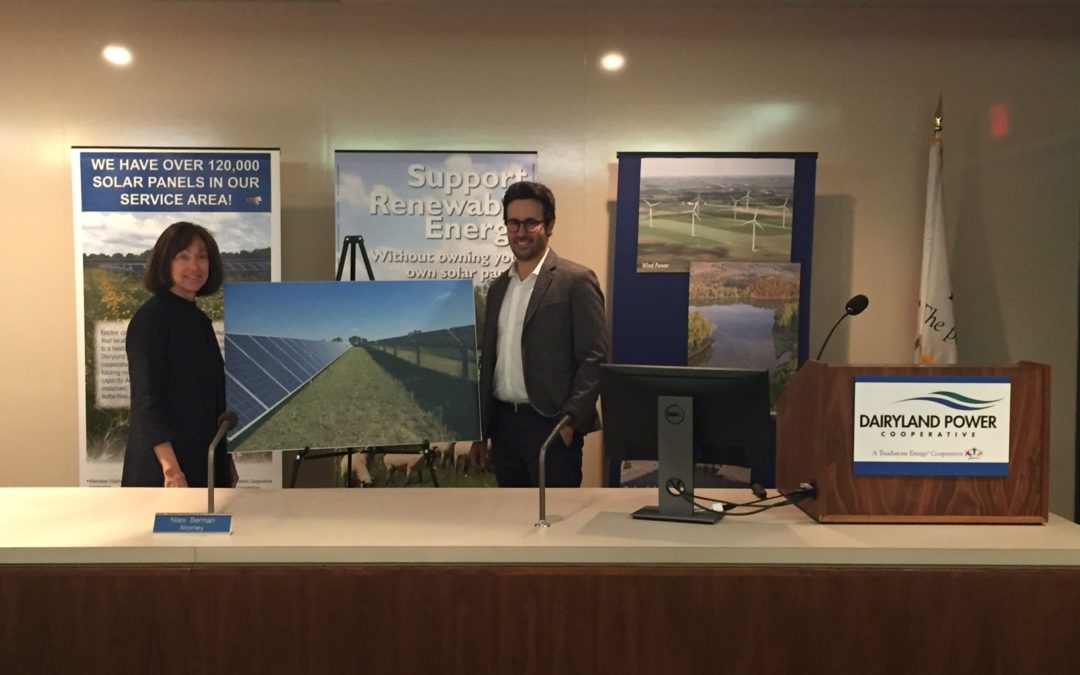
by Tyler Huebner | Mar 18, 2019 | Renewables, Solar, Utilities
Today at their headquarters in La Crosse, Dairyland Power Cooperative announced that it will be purchasing electricity from a major new Wisconsin-based solar energy facility being developed by Ranger Power.
The partnership involves a 149 megawatt solar power facility called Badger State Solar which is planned to be located in Jefferson County, Wisconsin. Ranger Power is planning to develop, own, and operate the project. Dairyland Power Cooperative will purchase all the electricity generated from the project through a long-term power purchase agreement.
The project will produce enough electricity to provide the equivalent annual needs of about 20,000 homes. If all approvals are granted from local and state permitting processes, construction would begin in 2020 and operation would commence in 2022.
RENEW Wisconsin’s Executive Director Tyler Huebner said, “Today’s announcement shows that solar power has become a cost-effective resource for Wisconsin’s major power providers such as Dairyland Power. By committing to this solar project which will be built right here in Wisconsin, Dairyland will meet its goals of a safe, reliable, affordable, and increasingly sustainable and diversified energy supply. We congratulate Dairyland Power Cooperative and Ranger Power on this historic announcement!”
By RENEW Wisconsin’s count, the state had about 103 megawatts of solar at year-end 2018, with Dairyland Power Cooperative responsible for about 20 megawatts, already placing it as the leader in the state for the amount of solar installed to-date. This project, along with a number of additional major solar projects, will dramatically increase the amount of solar energy produced in Wisconsin in the next five years.
More information about the project is included in the links below.
Dairyland Power Press Release
Badger State Solar Project Fact Sheet
Badger State Solar Project Economic Impact
Featured in image: Dairyland Power President and CEO Barb Nick and Ranger Power CEO Paul Harris
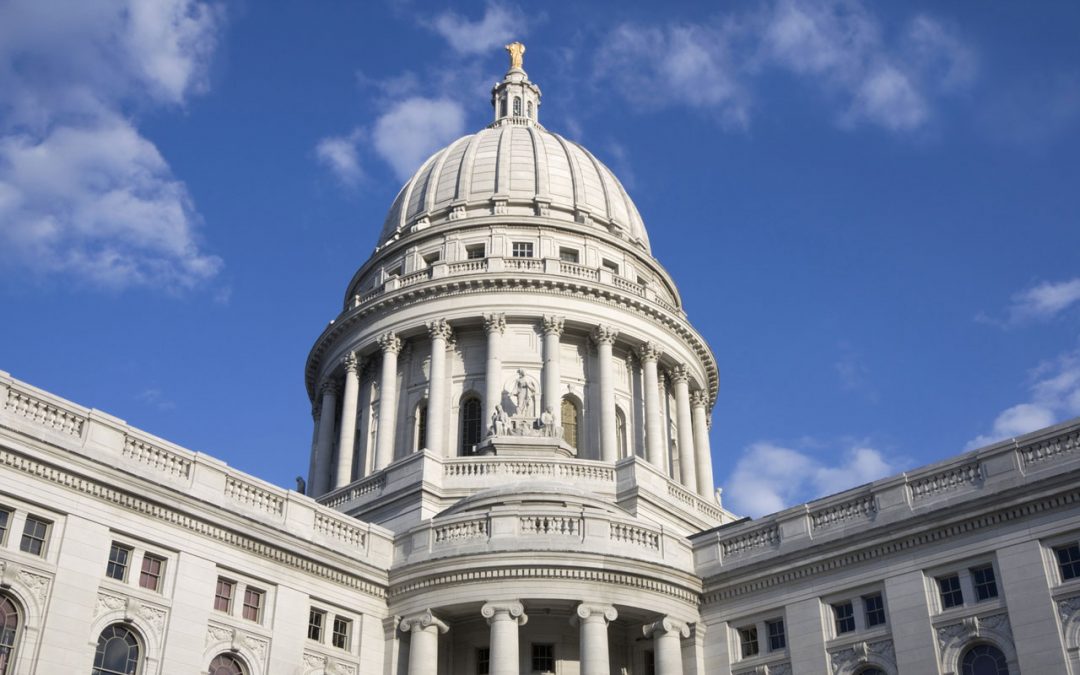
by Jim Boullion | Mar 13, 2019 | Advocacy, Electric Vehicles, Focus on Energy, Policy, Renewables
On February 28, Governor Tony Evers released his 2019-2021 state budget. The budget bill will now go to the Joint Finance Committee who will review it and get briefings on the various provisions from the Governor’s administration and specific state agencies. The committee will also hold a series of hearings around the state to learn what the general public thinks about the budget bill provisions. By statute, the budget bill is supposed to be complete by July 1st, but that date is not often met, regardless of which party holds power. Between now and then, please contact your state legislators and let them know what you think about the various provisions of the bill. You can find your legislator’s contact information by following this link.
Below is a short summary of the Governor’s proposals related to clean energy.
100% Carbon-Free Goal
Establishes a state goal that all electricity produced within the state should be 100 percent carbon-free by 2050. While not a mandate or requirement, writing this goal in Wisconsin’s statutes will help state agencies, the legislature and the public know what we are trying to achieve.
Allocate $75 million in bonding to fund energy conservation projects on state-owned facilities. $25 million of these funds would be allocated to renewable energy projects.
These funds will be used for energy conservation projects to help state agencies and UW System meet their energy reduction goals and reduce utility costs. Renewable projects could include solar, wind, standby generators or geothermal enhancements to state facilities. The achieved savings from the reduction in utility costs would be used to pay the debt service payments on the bonds.
Focus on Energy
Allows the Public Service Commission to increase funding for the Focus on Energy program beyond the current statutory limit of 1.2 percent of utility revenues. The bill also requires the PSC to submit to the Joint Finance Committee a proposal for spending a greater percentage on the programs than is currently allocated (The amount is to be determined by the PSC).
Create the Office of Sustainability and Clean Energy
Transfer the State Energy Office and its employees from the PSC to the Department of Administration. The new office would:
- Administer a $4 million clean energy research grant.
- Advise state agencies in developing sustainable infrastructure to reduce energy use.
- Study and report on the status of existing clean and renewable energy efforts by the state.
- Serve as a single point of contact to assist organizations pursuing clean energy opportunities.
- Identify clean energy funding opportunities for private and governmental entities.
- In coordination with other state agencies, collect and analyze data needed for clean and renewable energy planning and review those plans with the governor and legislature.
Use a Portion of VW Settlement Funds for EV Charge Station Grants
Spend $10 million of the remaining $25 million from the Volkswagen emissions settlement on grants for electric vehicle charging stations. The rest would be dedicated to replacing public transit vehicles. $42 million of the original $67.1 million that Wisconsin was allocated from the settlement was spent in 2017-19 for replacement of state vehicles and the transit assistance program.
Hybrid Vehicle Registration Fees – Definition expanded to include all hybrids, not just PHEV’s
All hybrid vehicles (any vehicle that uses a battery to increase mpg) would pay the additional $75 annual fee that was originally designed to cover only Plug-in-Hybrid vehicles. This is in addition to the proposed $96 (up from $75) annual vehicle registration fee paid by all vehicles. All-electric vehicles would continue to pay the additional $100 annual fee that was already in the statutes. The fee is designed to recover the sales taxes that would have been paid if they were powered by gasoline that is used to support the transportation budget.
WEDC Tax Credits for Energy Efficiency or Renewable Energy
WEDC would be allowed to award business tax credits of 5% for investments made on projects that improve energy efficiency or that generate energy from renewable resources.
Ratepayer Advocate (Intervenor Compensation) Grants
The bill increases from $300,000 to $500,000 the annual grants the PSC is allowed to make to nonprofit corporations that advocate on behalf of utility ratepayers.
If you have any questions or would like more information about any of these energy related issues please contact Jim Boullion, RENEW Wisconsin’s Director of Government Affairs.
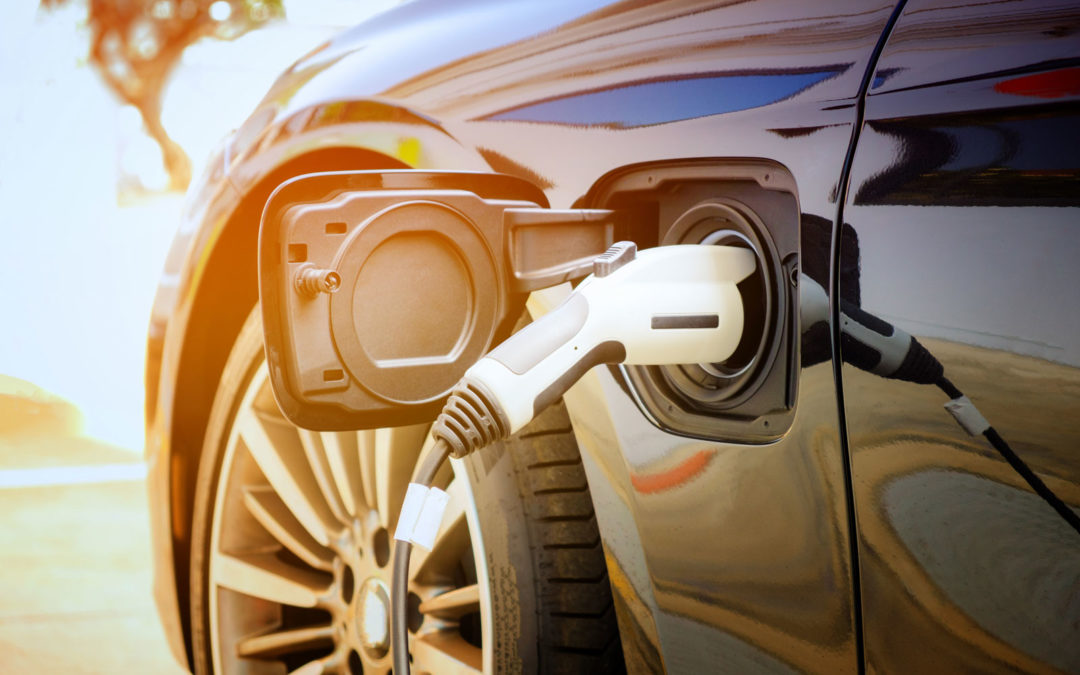
by Jane McCurry | Mar 6, 2019 | Electric Vehicles, Policy
Last fall, I wrote a blog about the Volkswagen Mitigation Settlement, A Big Opportunity for Electric Vehicles. The Federal Volkswagen Mitigation Trust awarded Wisconsin $67.1 million to replace aging diesel vehicles. The goal of the settlement is to counteract the damage done while over-polluting Volkswagen cars were in operation.
Wisconsin’s plan for spending approximately two-thirds of the funding, or $42 million, included replacing transit buses and state fleet vehicles. Now, it’s time to decide what to do the last third of that funding, about $25 million.
Good News!
Governor Evers released his State of Wisconsin Budget in Brief last Thursday. Good news! It included an allocation for the rest of Volkswagen Settlement funding, with a specific call-out for $10 million to fund electric vehicle charging infrastructure in Wisconsin. The budget calls for the $10 million to be administered as a grant program by the Department of Administration.
This is a big win. Per the settlement terms, states are allowed to use up to 15% of their funding to pay for electric vehicle infrastructure, which comes to just about $10 million in Wisconsin. Taking full advantage of this opportunity means Wisconsin drivers can drive with the confidence that they can recharge in public if they need to. This funding will go a long way to support a vast network of fast recharging stations across the entire state.
The rest of the funding, $15 million, was earmarked for more transit bus replacements. Our hope is that these buses will be electric. Electric buses are so much cheaper to operate, more efficient, and produce zero point-source pollution, making them a “win” for everyone.
What’s Next?
Before these Volkswagen allocations can be spent, the budget needs to pass through the legislature. While there is a chance that this budget will not pass, I am really excited to see a commitment to electric transportation. If this commitment makes it through the legislature, Wisconsin will join 44 other states that have also pledged to take advantage of this opportunity.
It’s a long road to ensure every Wisconsinite has access to affordable and clean transportation. This is a big step on that journey. Stay tuned for more details as we continue to follow the Volkswagen Mitigation Settlement and advocate for using Wisconsin’s funds to advance electric transportation.
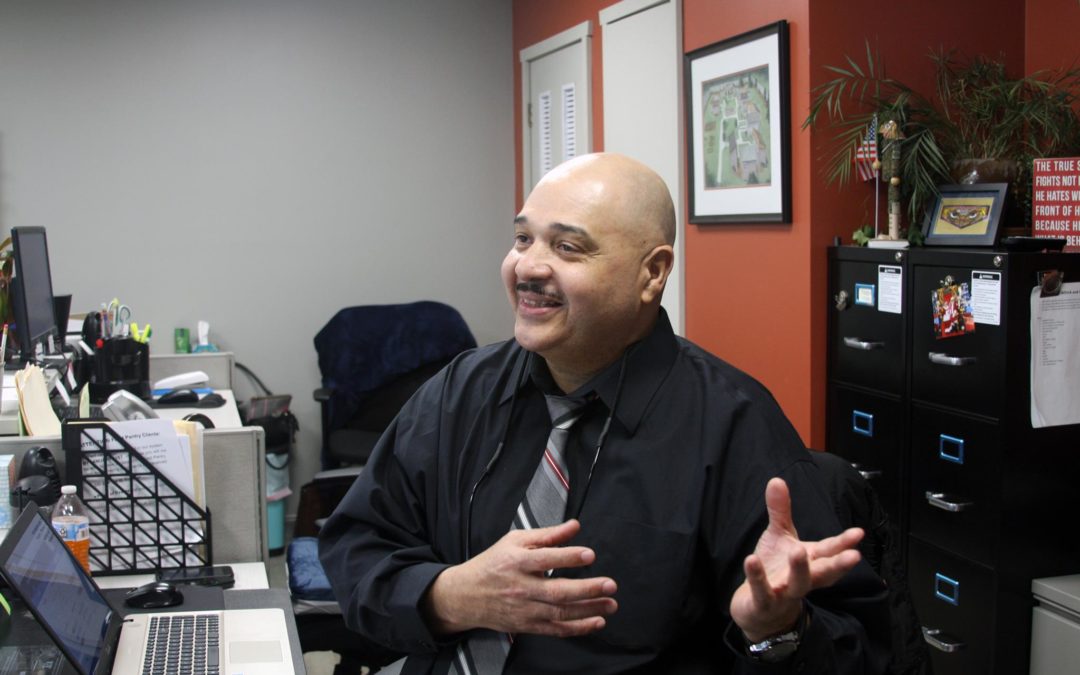
by Jodi Jean Amble | Feb 26, 2019 | RENEW Wisconsin, Renewables, Solar for Good
“I worry about my children and grandchildren and not leaving a mess for them. Having something sustainable for them. I think solar is a great idea. It’s the gift that keeps on giving.” These are the words of Mike, a navy veteran, and former police officer who lives in the James A. Peterson Veteran Village in Racine, WI. It’s a complex of 15 tiny homes and a community center that is now powered by the sun.
Mike spent 6 years in the navy and traveled all over the world. After his service, he went to school and then joined the police force in Chicago. “I spent 20 years in law enforcement. You’ve been doing something so long. Then I lost my wife, my house. I was homeless when I found out about Veterans Outreach in Racine. Jeff and Shannon welcomed me in.”
Mike was a yeoman in the navy, performing administrative and clerical work. This experience landed him a job in the Veterans Outreach office. According to Mike, Veterans Outreach of Wisconsin serves about 300 veterans per week in the food pantry. They also provide clothing, transportation (when needed), and tiny homes for veterans in the back. The tiny houses provide residents with a bed, television, and a small storage space. “You have to come out of there for the bathroom, shower, and the best kitchen in the world!” Mike said. “A lot of guys want to try to isolate, but you have to come in and you start talking. It’s good that you have to leave that cabin. You get up, take a shower, check your email, and slowly get yourself back into it.”
Veterans Outreach of Wisconsin is different than a shelter. It’s a recovery program offering meals, classes, and connections. The organization helps veterans find jobs and offers financial classes and community meetings. “They are good people,” Mike said. “They don’t get a lot of money, but they seldom say ‘no’ to anybody.”
According to the U.S. Department of Veterans Affairs, almost 38,000 Veterans are experiencing homelessness. While this number declined by 5% between 2017 and 2018, it’s still a distressing statistic. This is what inspired Jeff Gustin to co-found the center in 2013. “The whole idea that someone puts a uniform on and ends up homeless is crazy. Our nation is better than that,” Jeff said.

Walden Middle and High School, a school that focuses on the environment and sustainability, approached Veterans Outreach about helping them put solar on their SC Johnson Community Center. The Walden High School students raised over $20,000 for the solar project and the students’ efforts inspired a $10,000 matching grant from an anonymous donor. They also received a $10,000 Solar for Good grant, and were awarded a Focus on Energy prescriptive grant. Veterans Outreach paid for the rest of the project with their own funding, costs they plan to recover through offset electricity bills.
“It took very little to get this off the ground for us. The school approached us about it. We weren’t in a position to do this ourselves. We were just getting residents moved in and they ran with it. We had very little we had to do on our end and we’re very grateful.” Jeff said. The nearly 20 kilowatt array, installed by Arch Electric, is expected to save the organization almost $4,000 in annual utility costs. That’s money that the Veterans Outreach can put towards their mission. “For the person that does the bills. It’s huge for us,” Jeff said.
Jeff, Mike, and the rest of the Veterans Outreach team are still learning about solar and seeing the actual cost savings at the end of the year may inspire them to look into other solar projects. They just bought two new buildings to accommodate a larger food pantry to serve their clients. “I’m glad we’re lowering our carbon footprint. This is our future,” Jeff said. “One day I might go back to the high school and ask them if they’re ready for round two!”
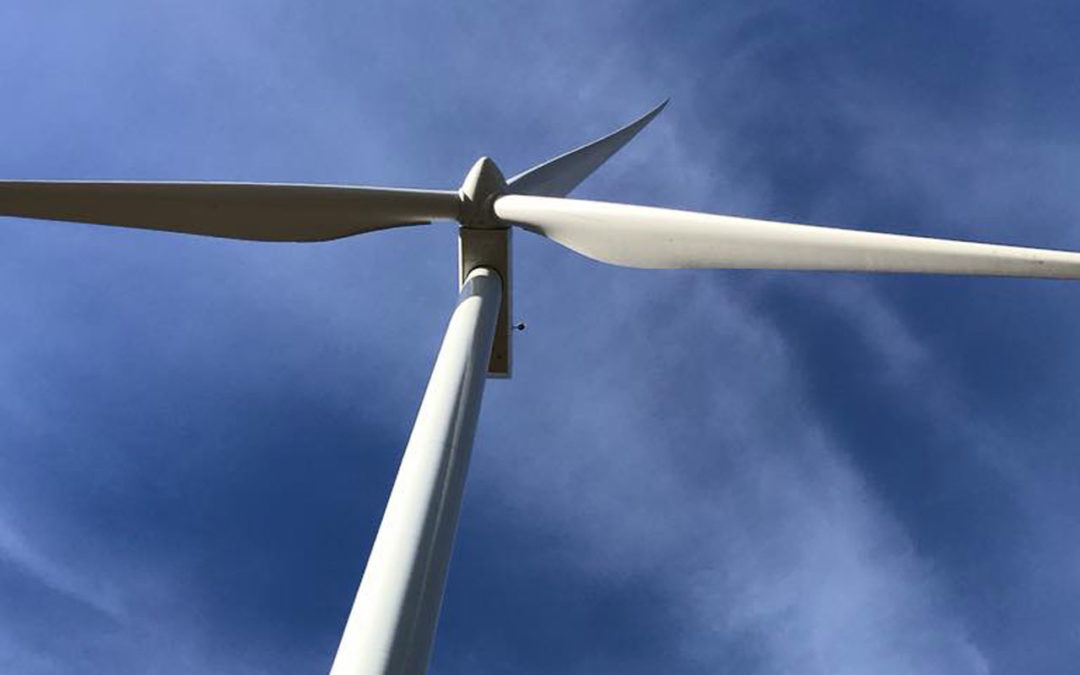
by Heather Allen | Feb 22, 2019 | Renewables, Utility Scale, Wind
After a prolonged absence from Wisconsin, wind developers are starting to come back to the Badger State with a desire to build projects. EDF Renewables, a nationally prominent renewable energy developer, has applied to construct and operate Green County’s first wind farm near the Illinois border. Called the Sugar River Wind Farm, this 24-turbine project would, if approved, generate an amount of electricity equal to what 20,000 households typically consume.
The Green County Board of Supervisors will review EDF’s 236-page application, which was submitted in late January, and will likely make a decision on the 65-megawatt project in July.
To accommodate the turbines, EDF envisions leasing almost 6,000 acres of farmland in the Town of Jefferson from area property owners. Participating landowners expect to continue farming operations while the wind farm operates.
As with other wind projects, the Sugar River Wind Farm will have a significant impact on the local economy. According to the application, more than $550,000 will flow to local landowners and governments each year during the project’s operation. Of that total, Green County and the Town of Jefferson will reap a combined $250,000 annually in the form of utility local aids.
Jefferson Township’s annual tax revenue income could increase by nearly 40% over 2019 levels as a result of this project. The project will also support 70 to 100 temporary construction jobs and three to five operations jobs over the life of the project.
If approved, Sugar River would be the second major wind energy development in Wisconsin to advance after a protracted lull in wind development activity that lasted between 2011 and 2017. Between a hostile political environment and a glut of generating capacity, utility-scale wind development activity languished in Wisconsin. During the dry spell here, developers flocked to neighboring states to tap into one of the most cost-effective clean energy sources available to utilities. The door reopened slightly when Dairyland Power Cooperative agreed to purchase electricity generated from Quilt Block Wind Farm, which started operating in November 2017.
Local Businesses Benefit from Wind Farms
Located in Lafayette County, Quilt Block has been hailed as a success by community leaders from the Town of Seymour and the City of Darlington.
“The Quilt Block Wind Farm in Darlington is a great asset to the City of Darlington and to Lafayette County,” said Darlington Mayor Dave Breuning. “During the construction, the employees were great to work with and they were very supportive of the retail businesses in Darlington.”
Mayor Bruening noted that Quilt Block’s labor force drove Ford trucks and had their vehicles serviced at the local auto dealership. Employees patronized area grocery stores and gas stations, and took their printing work to the local print shop, he said. “And then the Quilt Block Wind Farm built the office and garage in the Darlington business park. What a great addition to the City!”
More Efficient Wind Farms Lead to New Wind Proposals
Wind projects have become increasingly productive, as turbines are designed to be taller with longer blades to capture winds higher up in the sky that blow at faster speeds. “There’s an old physics equation that says when you can double the speed of the wind you are catching, the power that you’ll produce goes up eightfold,” Tyler Huebner, Executive Director of RENEW Wisconsin. “It’s a cubed relationship.” As the technology improves and wind farms become more cost-competitive, developers are working again in Wisconsin and coming forward with new proposals.
Wind Regulations and Project Review Timeline
When it took effect in 2012, Wis. Admin. Code § PSC 128 established the formal process that all local governments must abide by when reviewing permit applications for wind farms under 100 MW. The rule also set standards that local governments may apply to the placement of wind turbines as well as their construction and operation. Local governments have the option of adopting, for example, setback distances that are less stringent than the baseline standards in PSC 128. However, they may not impose standards that are more stringent than those specified in that rule. Wind energy projects in excess of 100 MW are reviewed by the Public Service Commission.
Green County has 90 days from the date of the application (Jan 30, 2019) to adopt a wind energy ordinance and an additional 90 days to review and approve the proposed project. At its March 12, 2019, meeting Green County Board of Supervisors will consider a resolution to adopt a wind ordinance. Wind energy projects that aren’t approved by the County within the two consecutive 90 day periods after an application is submitted are automatically approved.
How Can I Support Wind Development in Green County and Wisconsin?
Green County residents can send an email to the Green County Board of Supervisors. Their contact information is available here.
Learn more about wind. A report titled “Wind Turbines and Health” was recently issued by three organizations: the Environmental Health Sciences Research Center (which exists within the University of Iowa College of Public Health), Iowa Policy Project, and Iowa Environmental Council. The report summarizes the results of the most rigorous research available on the benefits and risks related to wind power.
Join RENEW’s information session about wind power on March 25, 2019, at 5 pm at the Monroe, WI Super 8 Motel. Enjoy refreshments and hear from the Mayor of Darlington and his colleagues talk about their experience in Lafayette County with the Quilt Block Wind Farm.
*This blog post was written by Heather Allen with contributions from Michael Vickerman.
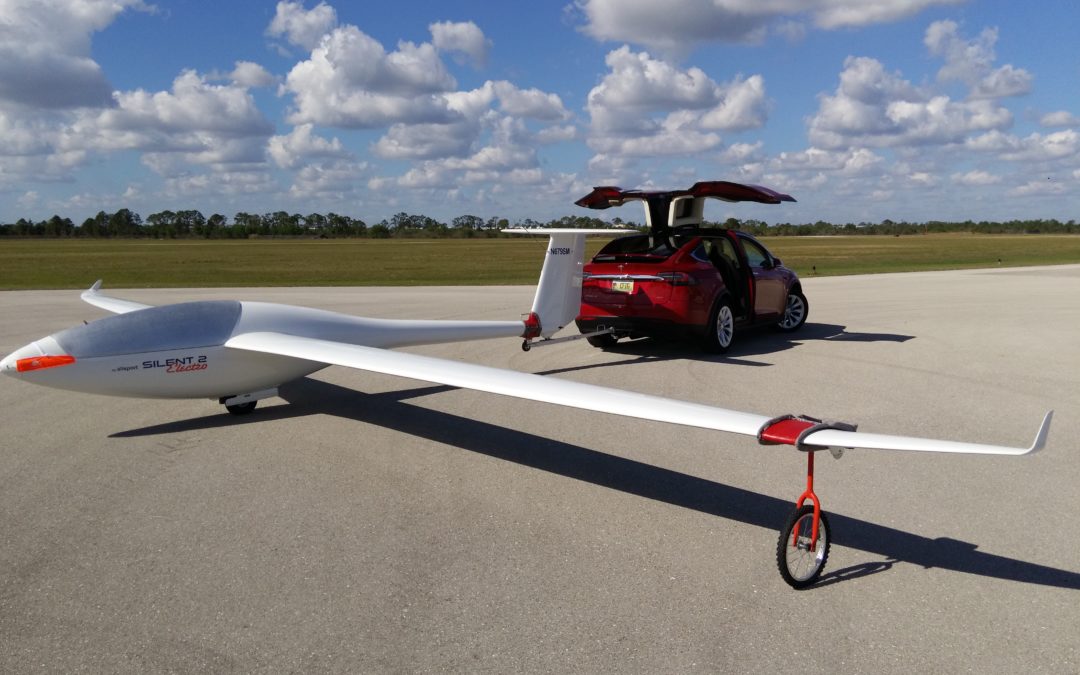
by Jane McCurry | Feb 20, 2019 | Electric Vehicles
I met Scott Manley at a National Drive Electric Week event back in September, at a Ride-n-Drive that featured his Tesla Model X. Scott’s Tesla caught my eye, but after talking with him for a few minutes, I realized that owning a Tesla was far from the most interesting thing about Scott.
Scott is a pilot and his personal aircraft is special in that it is an electrically self-launching glider. Pure gliders don’t have a propulsion system. Instead, they are typically pulled into the air by a powered airplane until they’re high enough to reach a source of rising air. Much like hawks, gliders then stay aloft using that rising air.
Scott’s glider has an electric motor, which means it doesn’t need to be towed into the air. His glider is capable of taking off under its own power and climbing into the rising air. Once there, the motor is shut down, the propeller blades fold against the side of the glider, and the flight continues, often for hours at a time, using only the energy in the atmosphere; free, clean energy generated by the sun heating the ground.
The image above shows the Tesla Model X ready to tow Scott’s Alisport Silent 2 Electro out to the launch area. The beautiful cumulus clouds in the background are each the result of a rising column of air. Way cool.
Scott is also an F.A.A. (Federal Aviation Administration) certificated glider flight instructor providing both aircraft-based and simulation-based flight training at-a-distance (via the Internet) to glider rating candidates nationwide. Learn more about him at gliderCFI.com.












